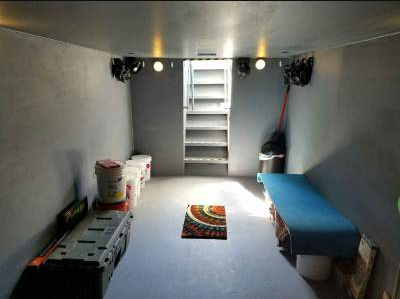Dark clouds rolling in, thunder rumbling in the distance, and strong winds beginning to whip around. It’s a scene that sends chills down your spine – and for good reason. Severe storms can wreak havoc on our homes and communities, leaving us vulnerable to their destructive force. That’s where storm shelters come in. These fortified sanctuaries provide a safe haven during some of nature’s most violent moments. In this blog post, we’ll explore everything you need to know about storm shelters – from what they are to the different types available. So grab a cup of coffee, get cozy, and let’s dive into the world of storm shelters!
What is a Storm Shelter?
When it comes to protecting ourselves and our loved ones from the wrath of Mother Nature, storm shelters are a lifesaver. But what exactly is a storm shelter? Simply put, it’s a specially designed structure that provides safety during severe weather events such as tornadoes or hurricanes.
These shelters are built with reinforced materials like steel or concrete, making them sturdy enough to withstand high winds and flying debris. They are often installed either underground or above ground, depending on the available space and personal preference.
Underground storm shelters offer the advantage of being naturally insulated by the surrounding soil, providing additional protection from extreme temperatures and reducing noise levels. They can be constructed in various shapes and sizes – from small units designed for individual households to larger community shelters capable of accommodating multiple families.
On the other hand, above-ground storm shelters provide accessibility without requiring excavation work. These structures can be built adjacent to your home or even inside an existing room, offering convenience during emergencies. Some above-ground options also double as safe rooms that provide protection against intruders or other security threats.
Regardless of their form, all storm shelters share one common goal: ensuring the safety and well-being of those seeking refuge within their walls. By providing a secure space where individuals can ride out storms without fear of injury or worse, these structures become essential additions to any disaster preparedness plan.
So whether you live in an area prone to tornadoes or simply want peace of mind when severe weather strikes unexpectedly, investing in a reliable storm shelter is an investment in your family’s safety. Now that we have covered what a storm shelter is let’s explore the different types available!
Types of Storm Shelters
When it comes to protecting yourself and your loved ones from the devastating effects of severe weather, having a storm shelter is crucial. There are several types of storm shelters available on the market today, each with its own unique features and benefits. Let’s explore some of the most common types:
- Underground Storm Shelters: These shelters are typically installed below ground level in your backyard or garage. They provide excellent protection against tornadoes and high winds, as they are designed to withstand extreme forces.
- Above-Ground Safe Rooms: If you don’t have space for an underground shelter, above-ground safe rooms are a great alternative. These reinforced structures can be installed inside your home or garage and offer reliable protection during storms.
- Community Shelters: In areas prone to frequent severe weather events, community shelters play a vital role in providing refuge for residents. These large-scale shelters can accommodate multiple families and often come equipped with emergency supplies.
- Portable Shelters: For those who need flexibility or live in rental properties, portable storm shelters are an ideal choice. These lightweight units can be easily transported and set up wherever needed.
Remember that when choosing a storm shelter, consider factors such as size requirements, budget constraints, accessibility options, and local building codes.
By investing in a quality storm shelter that suits your needs best, you’ll have peace of mind knowing you’ve taken proactive steps towards protecting yourself during dangerous weather conditions.
Conclusion
In times of severe weather and natural disasters, having a storm shelter can be a lifesaver. Whether you live in an area prone to tornadoes or want to be prepared for any unforeseen circumstances, investing in a storm shelter is a wise decision.
Throughout this article, we have explored what storm shelters are and the different types available. From underground bunkers to above-ground safe rooms, there is a solution that suits every need and budget.
When choosing a storm shelter, consider factors such as location, size, durability, and ventilation. It’s also essential to ensure that your chosen shelter meets industry standards and safety regulations.
Remember that while storm shelters provide protection during emergencies, it is equally important to stay informed about weather alerts and evacuation plans issued by local authorities. Having an emergency kit with essential supplies on hand can also make all the difference in keeping you safe during these challenging times.
Whether you opt for an underground tornado shelter or an above-ground safe room, prioritizing your safety should always come first. Don’t wait until disaster strikes – start researching reputable providers of storm shelters today!




